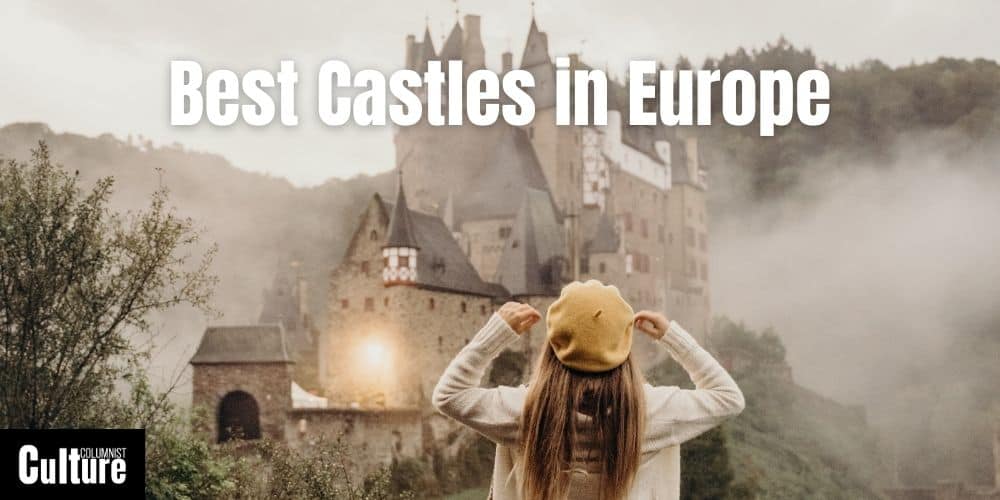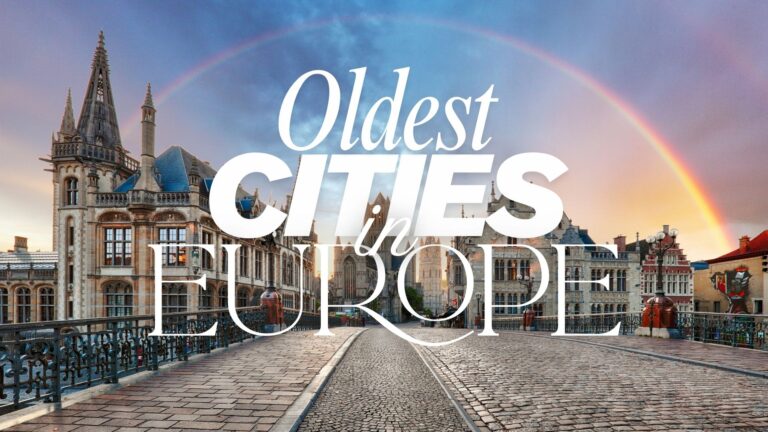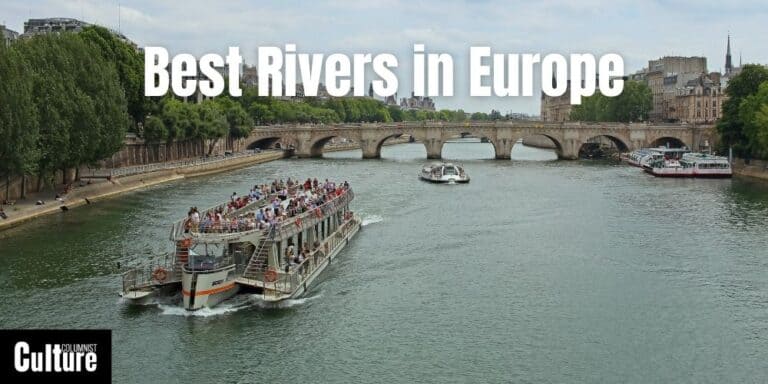Best Castles To Visit In Europe
Europe is steeped in history, and its castles are some of the most tangible and awe-inspiring remnants of its past. From fairy-tale turrets to imposing fortresses, these castles provide a fascinating journey through time and a unique glimpse into the continents’ diverse cultures.
With hundreds of castles spread across different countries, each with its own story and architectural style, it’s crucial to know which ones are the best to visit during your trip to Europe.
From castles that are historically significant to castle ruins that are incredibly well-preserved, this article explores the top 30 castles in Europe that are worth a visit.
Castles like Neuschwanstein in Germany, the Château de Chambord in France, and Edinburgh Castle in Scotland are not only among the most famous but also among the most visited.
There are hidden gems, like Predjama Castle in Slovenia or Peleș Castle in Romania, that offer equally rich experiences. Prices for entry and guided tours vary, with many offering free admission.
Whether you’re a history buff, a couple seeking a romantic backdrop, or a family looking for an educational escapade, the curated list below will help you find the perfect European castle for you.
Neuschwanstein Castle, Germany
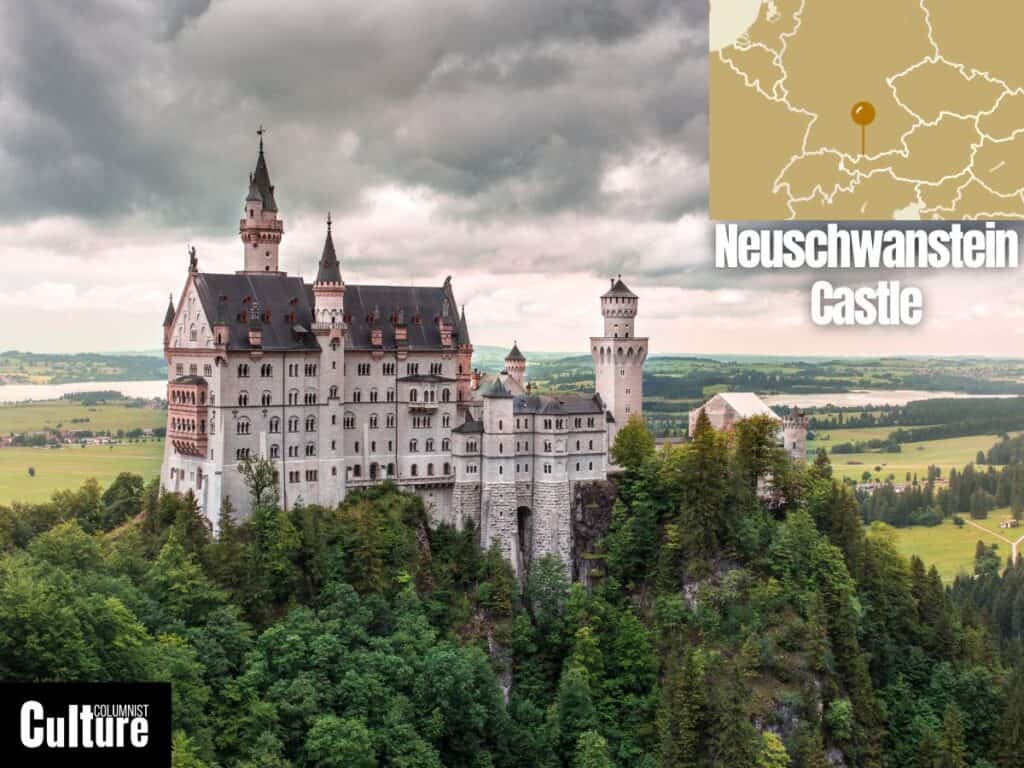
Located in Bavaria, Germany, Neuschwanstein Castle was commissioned by Ludwig II of Bavaria in the 19th century and is often referred to as the “fairy-tale castle”, inspiring the likes of Disneyland’s Sleeping Beauty Castle.
It is built in Romanesque revival style with towers and turrets, the highest of which stands at 213 feet (65 meters). It has five floors and over 200 rooms, with the Throne Hall and the Singers’ Hall showcasing medieval-inspired interior design.
Entrance is by guided tour only, so booking in advance is recommended. The Marienbrücke bridge offers a breathtaking view of the castle, particularly during the fall, against the backdrop of the autumnal colors of the Bavarian forests.
Edinburgh Castle, Scotland
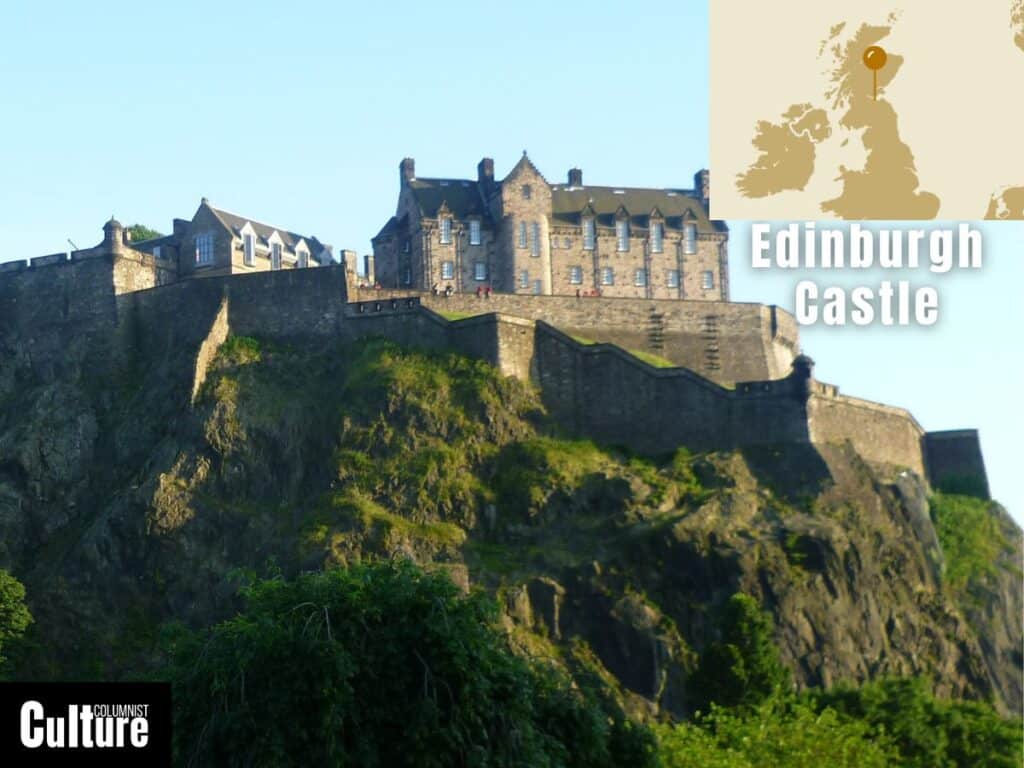
Edinburgh Castle is perched atop Castle Rock in Edinburgh, Scotland. Built during the 12th century, the castle has played a significant role in Scottish history, serving as both a royal residence and a military stronghold. It’s a symbol of Edinburgh and one of the most visited attractions in Scotland.
Constructed primarily in the medieval style, the castle’s prominent features include the Crown Square, the Great Hall with its hammerbeam roof, and St. Margaret’s Chapel, the oldest surviving building in Edinburgh. The castle’s exterior is mostly built from local “Craigmillar” sandstone.
Edinburgh Castle is open to the public, with the option of guided tours. The castle hosts the annual Royal Edinburgh Military Tattoo (musical performance), making August a particularly vibrant time to visit. The National War Museum and the Stone of Destiny are must-see exhibits within the castle.
Warwick Castle, England
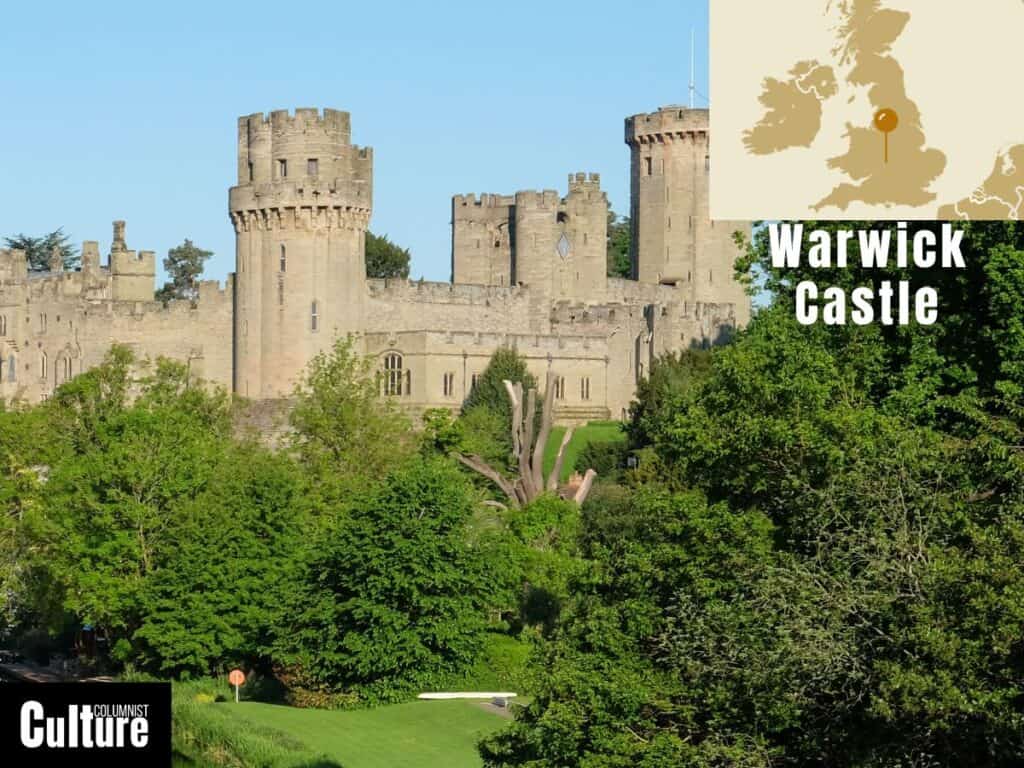
Warwick Castle is located in Warwickshire, England. The castle was initially built as a wooden motte-and-bailey castle by William the Conqueror in 1068 and has a long and storied history involving famous figures like Richard the Lionheart. It is one of the most well-preserved medieval castles in the UK.
The castle showcases a mix of architectural styles, but predominantly features medieval military architecture. The Gatehouse and Barbican are particularly well-preserved, showcasing the castle’s defensive mechanisms. The interiors boast sumptuous state rooms and a grand hall with armor displays.
The castle is open to the public and offers various guided tours. Warwick Castle hosts seasonal events like jousting tournaments and falconry displays, providing a real life experience of what medieval history was like. The castle also overlooks the River Avon, offering picturesque views.
Balmoral Castle, Scotland
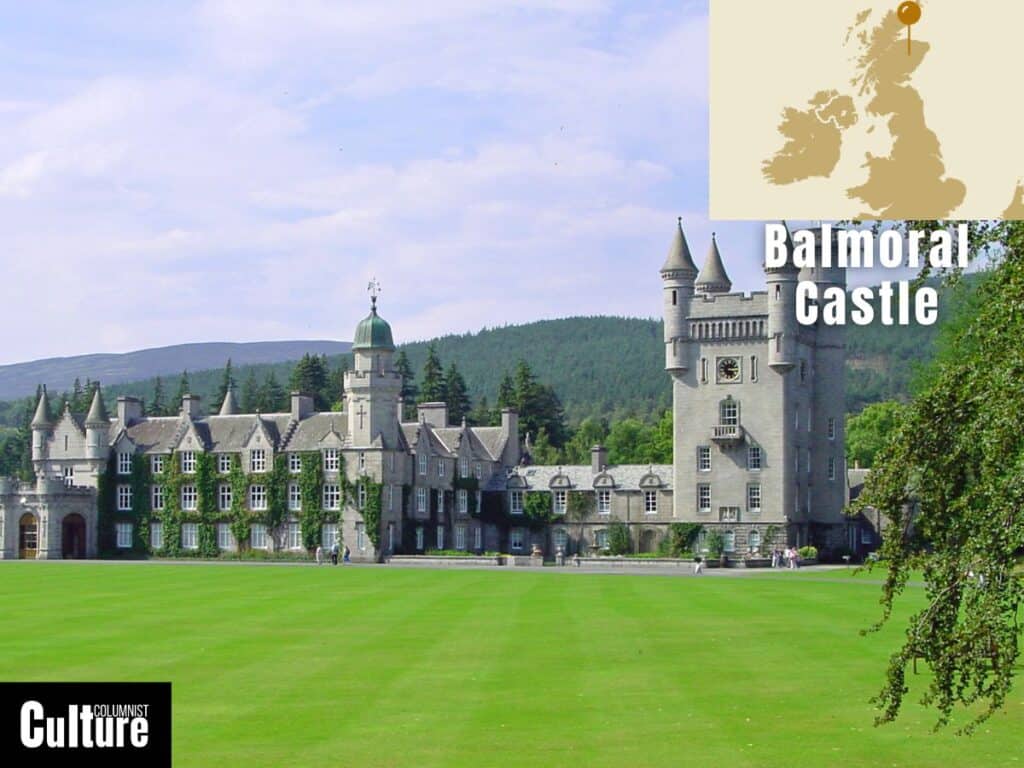
Balmoral Castle is located in Aberdeenshire, Scotland, and serves as a private residence for the British royal family. Purchased by Prince Albert for Queen Victoria in 1852, the estate is particularly associated with the Victorian era and is celebrated for its Scottish baronial architecture.
Designed by architect William Smith, the castle features elements of Scottish Baronial style, which combines aspects of Gothic and Renaissance architectural traditions. Notable elements include the 80-foot (24-meter) tall clock tower and the intricate ballroom, which houses artwork and artifacts.
The castle’s gardens and the ballroom are open to the public, but it’s important to check the schedule as it can be updated each year. As admission is free, there is no requirement to book admission tickets to visit the grounds. The estate provides an excellent opportunity for wildlife spotting, and the nearby village of Crathie is worth a visit.
Alnwick Castle, England
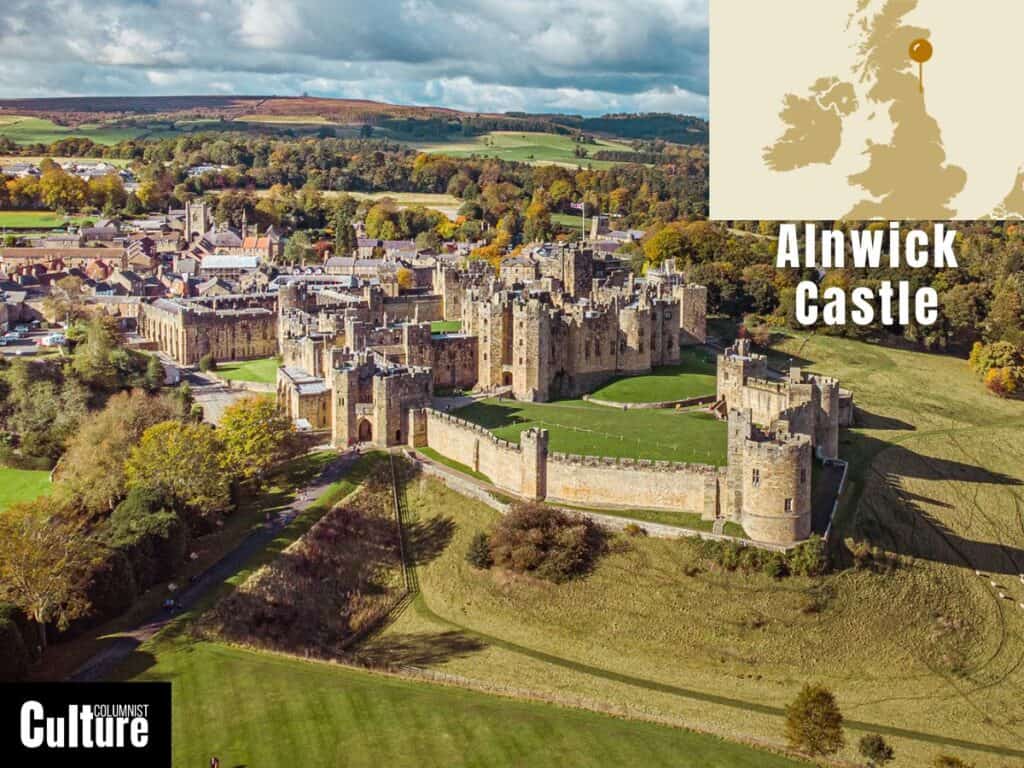
Perched atop the Sintra hills in Portugal, the National Palace of Pena is a 19th-century Romanticist castle. Commissioned by King Ferdinand II, the castle is a UNESCO World Heritage Site and symbolizes 19th-century Romanticism in Portugal.
The palace is a blend of Neo-Gothic, Neo-Manueline, Islamic, and Renaissance architectural styles. Its vividly painted terraces, decorative battlements, and mythological statues are what give this castle its uniqueness. The interior is no short of opulent and is furnished with various cultural influences, such as Arabic, Turkish, and Indian.
The palace is open to the public year-round, and guided tours are available. The nearby Park of Pena offers panoramic views of the castle amidst lush, exotic gardens. Visiting in the early morning or late afternoon offers the best experience and lighting for photography.
National Palace of Pena, Portugal
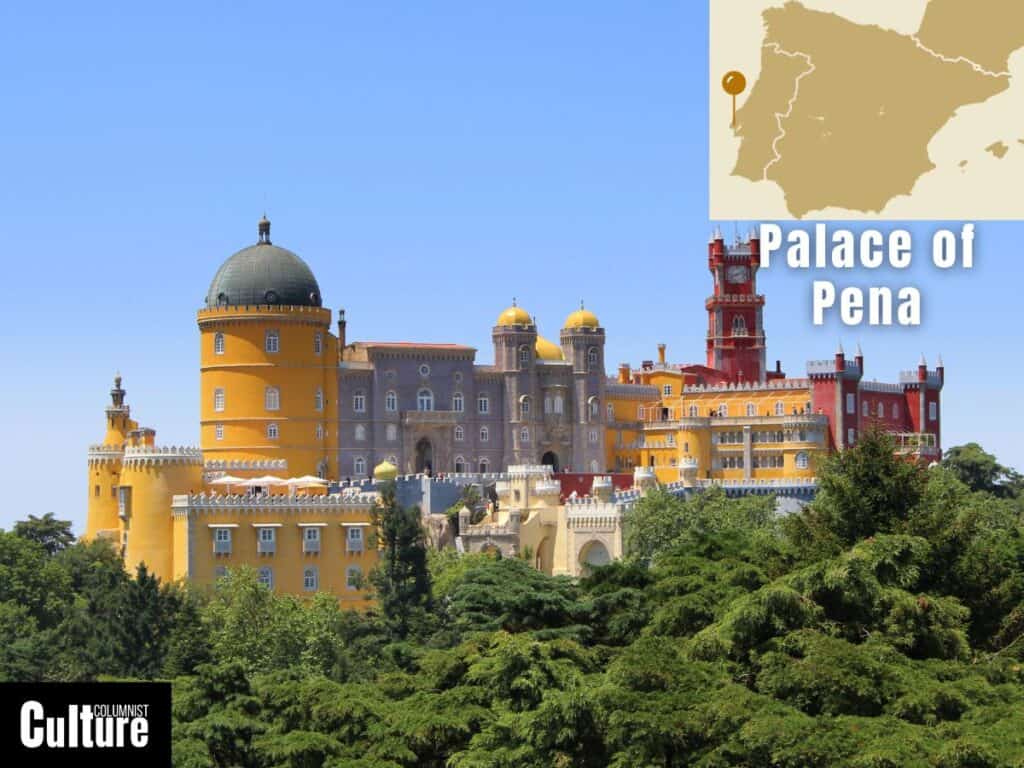
Situated atop Mount Hohenzollern in Germany, Hohenzollern Castle serves as the ancestral seat of the Hohenzollern family, which came to prominence during the Middle Ages. The current structure is the third castle on the site and was built in the 19th century.
The castle stands impressively amidst the German landscape with its fortified walls, watchtowers, and decorative elements, creating a fairytale castle silhouette in the sky. Highlights of the castle include the internal courtyard with its ornate frescoes and the lavish Schlosskapelle (Castle Chapel), adorned with intricate woodwork and paintings.
Hohenzollern Castle is open to the public, and guided tours are available. The viewpoint from the castle provides panoramic views of up to 100 kilometers on clear days. Seasonal events like Christmas markets make winter visits particularly special.
Hohenzollern Castle, Germany
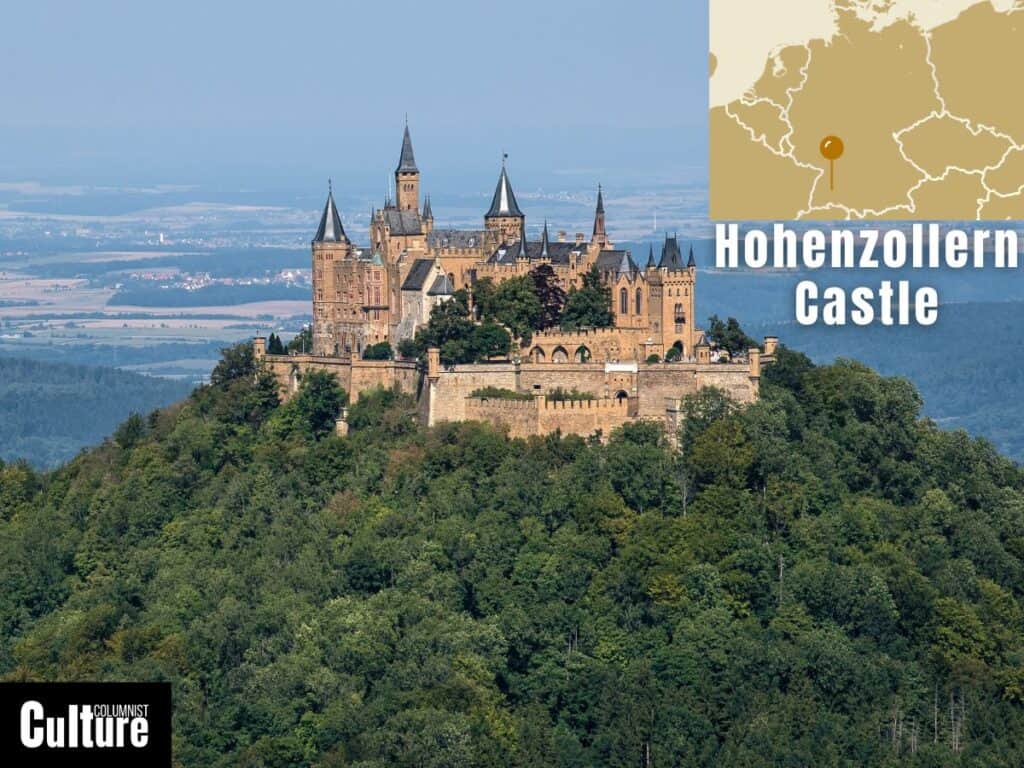
Situated atop Mount Hohenzollern in Germany, Hohenzollern Castle serves as the ancestral seat of the Hohenzollern family, which came to prominence during the Middle Ages. The current structure is the third castle on the site and was built in the 19th century.
The castle stands impressively amidst the German landscape with its fortified walls, watchtowers, and decorative elements, creating a fairytale castle silhouette in the sky. Highlights of the castle include the internal courtyard with its ornate frescoes and the lavish Schlosskapelle (Castle Chapel), adorned with intricate woodwork and paintings.
Hohenzollern Castle is open to the public, and guided tours are available. The viewpoint from the castle provides panoramic views of up to 100 kilometers on clear days. Seasonal events like Christmas markets make winter visits particularly special.
Conwy Castle, Wales
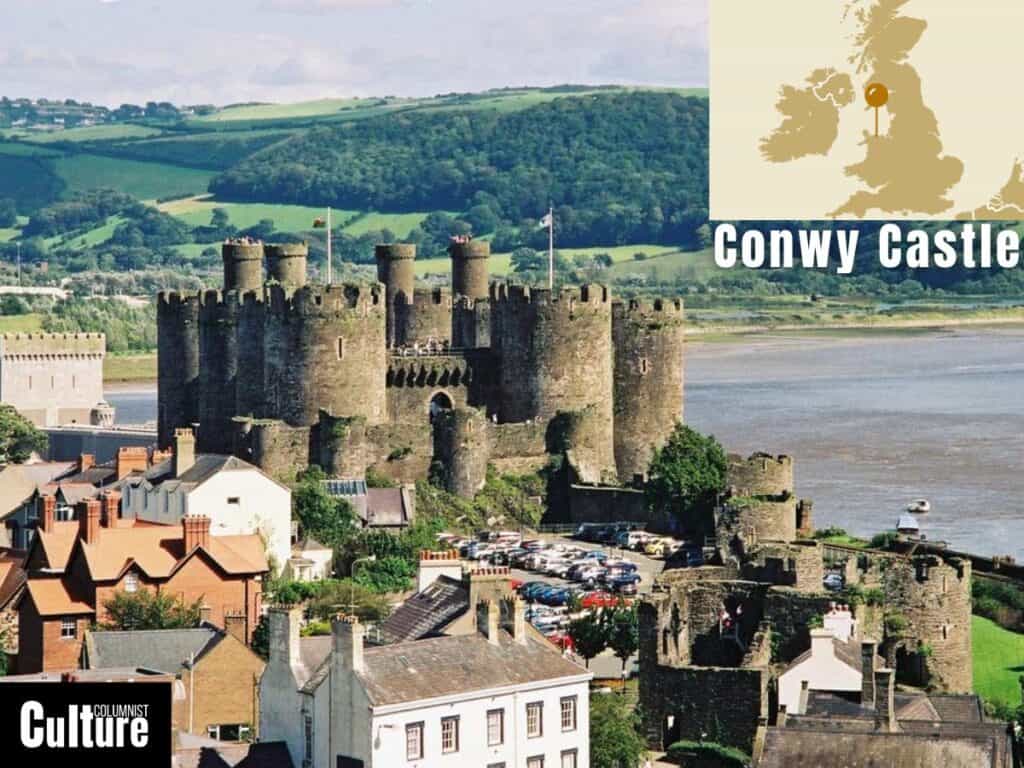
Located in Conwy, Wales, Conwy Castle was built by Edward I during the 13th century as part of his conquest of Wales. It is considered one of the finest examples of medieval military architecture and is a UNESCO World Heritage Site.
Constructed in a distinctive concentric design, this Edwardian castle features massive curtain walls and eight imposing towers. The castle offers a near-perfect example of 13th-century military architecture, with private chambers and a well-preserved great hall with a distinct curved bow shape.
Conwy Castle is open to the public and can be explored independently or with a guide. The castle towers watch over the mighty mountains of Snowdonia with spectacular views of the countryside and the adjacent Conwy Suspension Bridge. The best time to visit is between April and October, when the weather is warmer.
Chillon Castle, Switzerland
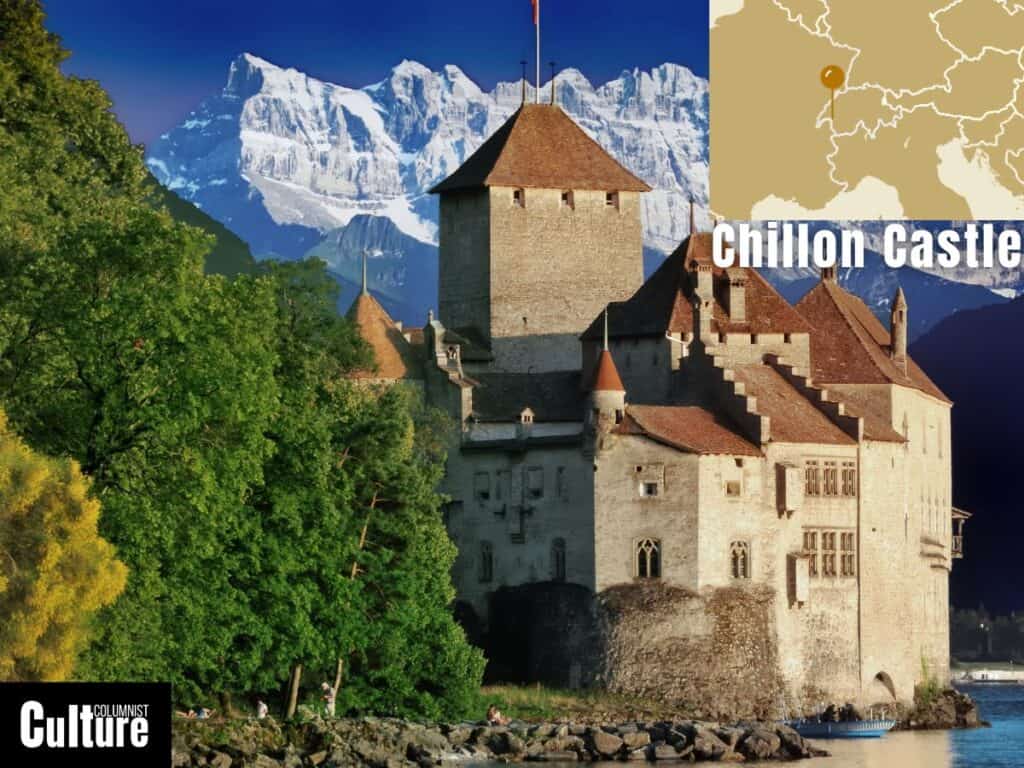
Chillon Castle is situated on the shores of Lake Geneva in Veytaux, Switzerland. Originally a Roman outpost, the castle served as a strategic water fortress for several centuries. It was made famous by Lord Byron’s poem “The Prisoner of Chillon.”
The castle consists of 25 buildings that form a labyrinthine-like structure. It features Gothic arches, wood-paneling, and medieval frescoes. The subterranean vaults and dungeons are well-preserved, as is the Bernese Chamber, which houses art and walnut furniture, including an original four-poster bed.
Chillon Castle is open year-round, with guided tours available in several languages. The adjacent beach offers spectacular views of the castle set against the backdrop of the Alps, particularly at dusk when the castle exterior lights up.
Caernarfon Castle, Wales
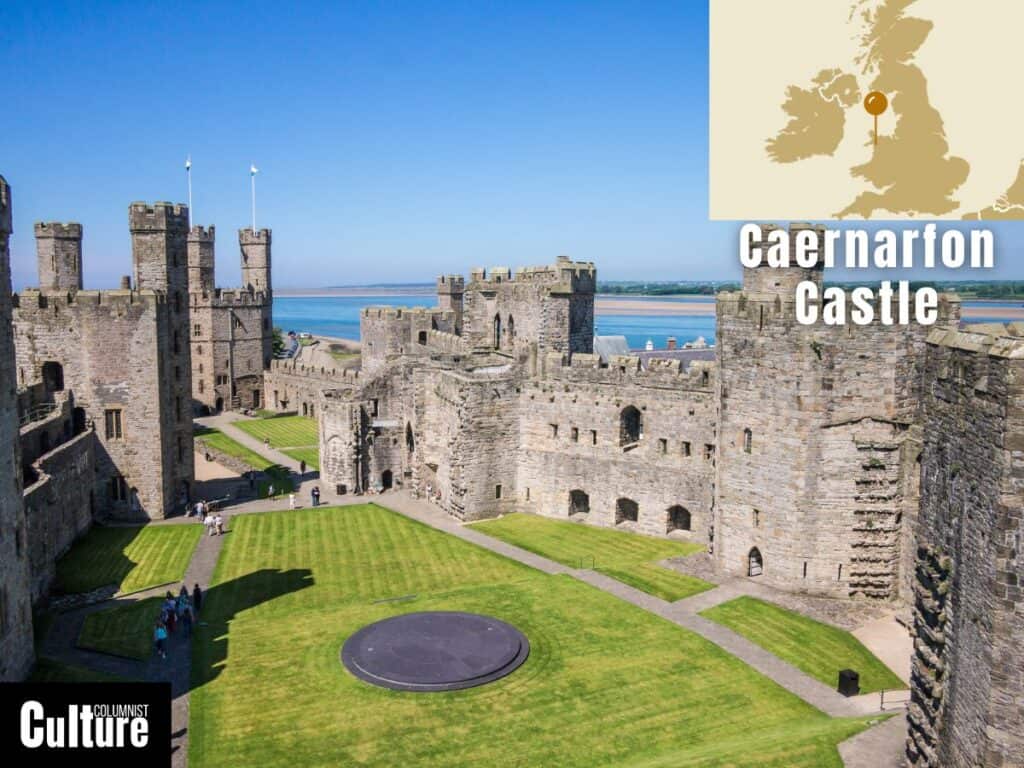
Located in Caernarfon, Wales, this castle was commissioned by Edward I in the 13th century as a symbol of English dominance over Wales. It’s famous for its polygonal towers and its role in the investiture ceremony of the Prince of Wales.
The castle showcases a unique blend of medieval fortress architecture and Roman wall design. It features distinctive polygonal towers, an asymmetrical internal layout, and fortified gatehouses. The castle walls are built using different shades of angular stones, providing a sort of striped pattern across the castle’s facade.
Caernarfon Castle is open to the public, and guided tours are available. The Eagle Tower offers a panoramic view of the Menai Strait and the town. The castle also houses the Royal Welch Fusiliers Museum, an added attraction for history enthusiasts.
Bodiam Castle, England
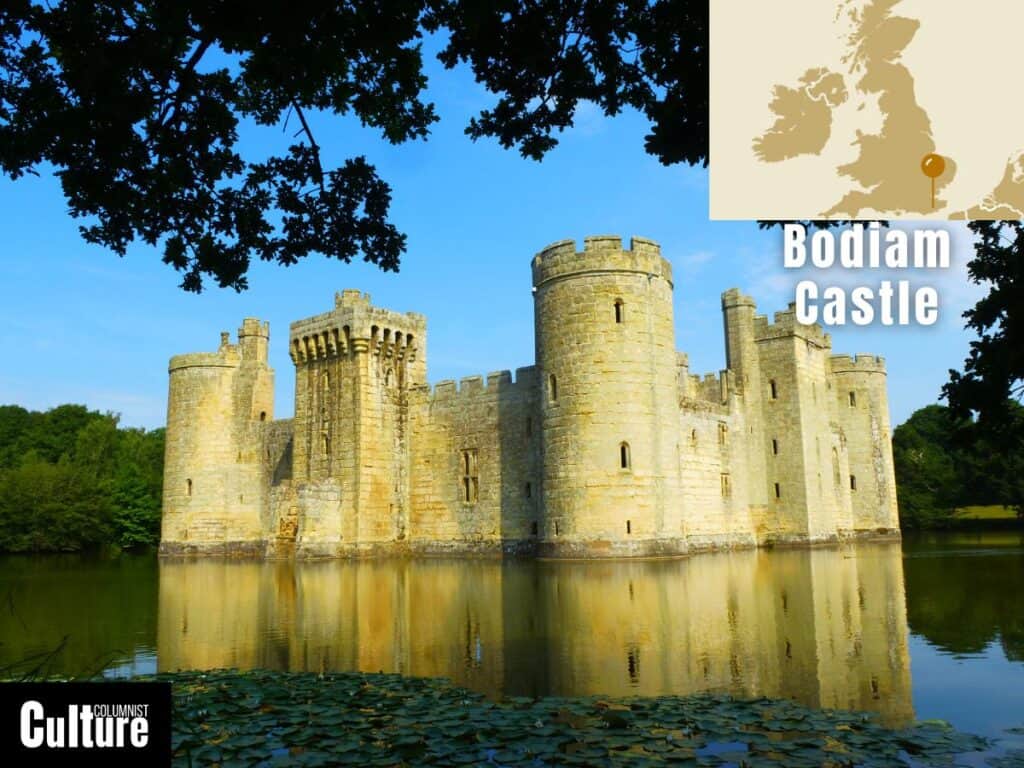
Located in East Sussex, England, Bodiam Castle is a 14th-century moated castle built by Sir Edward Dalyngrigge. It was constructed to defend against the French invasion during the Hundred Years’ War and stands as a picturesque example of medieval military architecture.
Bodiam Castle features a simple yet effective design, with a quadrangular layout surrounded by a broad moat. Despite its sombre military appearance, the interior is designed for comfortable living, with a grand hall, private chambers, and large fireplaces. The castle’s battlements and towers are well-preserved.
The castle is open to the public and is managed by the National Trust. Guided tours are available, and visitors can explore the towers and battlements. The castle is particularly popular in the spring and summer, when the surrounding gardens are in full bloom.
Kilkenny Castle, Ireland
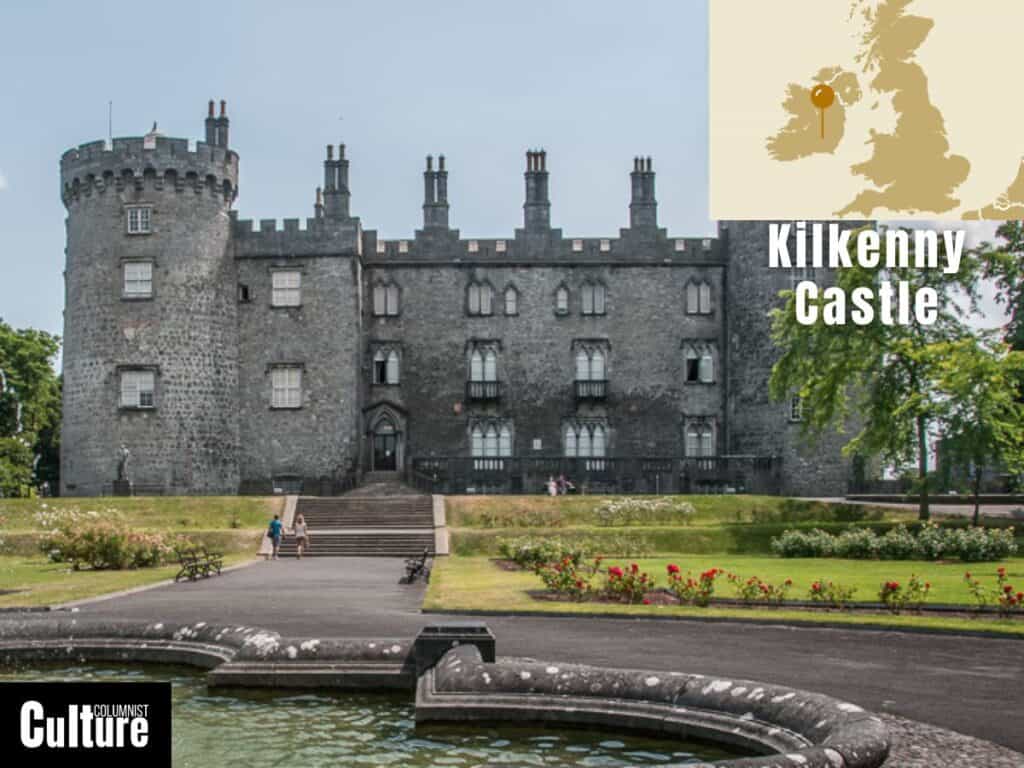
Kilkenny Castle is located in Kilkenny, Ireland, and was built in 1195 by William Marshal, the 1st Earl of Pembroke. It served as the seat of the Butler family for almost 600 years and played a crucial role in Irish history, particularly during the Irish Civil War.
The castle showcases a blend of architectural styles, including Norman fortifications and Victorian restorations. It has a rectangular shape with large circular towers at the corners. The interiors are adorned with original tapestries, paintings, and antiques, reflecting the grandeur of different eras.
Kilkenny Castle is open to the public year-round, with self-guided tours and guided tours available, which are recommended to better understand the interesting lineage of the castle. The Rose Garden and Ornamental Lake are particularly beautiful and offer excellent photo opportunities. Various art exhibitions are hosted in the castle throughout the year.
Castelo dos Mouros, Portugal
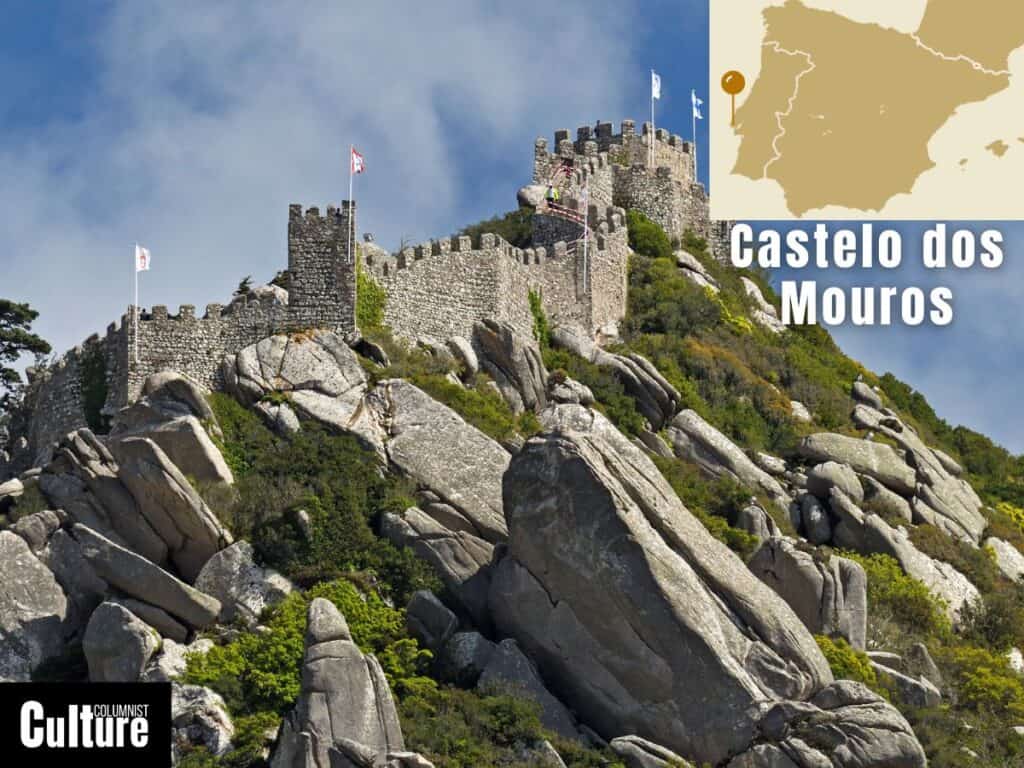
Castelo dos Mouros, or Castle of the Moors, is perched on the hills of Sintra, Portugal. Built in the 8th century during the Muslim occupation of the Iberian Peninsula, it was later conquered by Christian forces in the 12th century.
The castle features classic Islamic military architecture with a series of ringed walls and fortified towers. Although now largely in ruins, the castle retains its long defensive walls that stretch across the hills and forests, which allow you to explore and climb the castle steps, offering panoramic views of the Sintra region.
The castle is open to the public and can be reached via a challenging hike or a short bus ride from the town of Sintra. It’s advisable to wear sturdy shoes when exploring the uneven and steep terrain. The castle is particularly stunning at sunset.
Kronborg Slot, Denmark
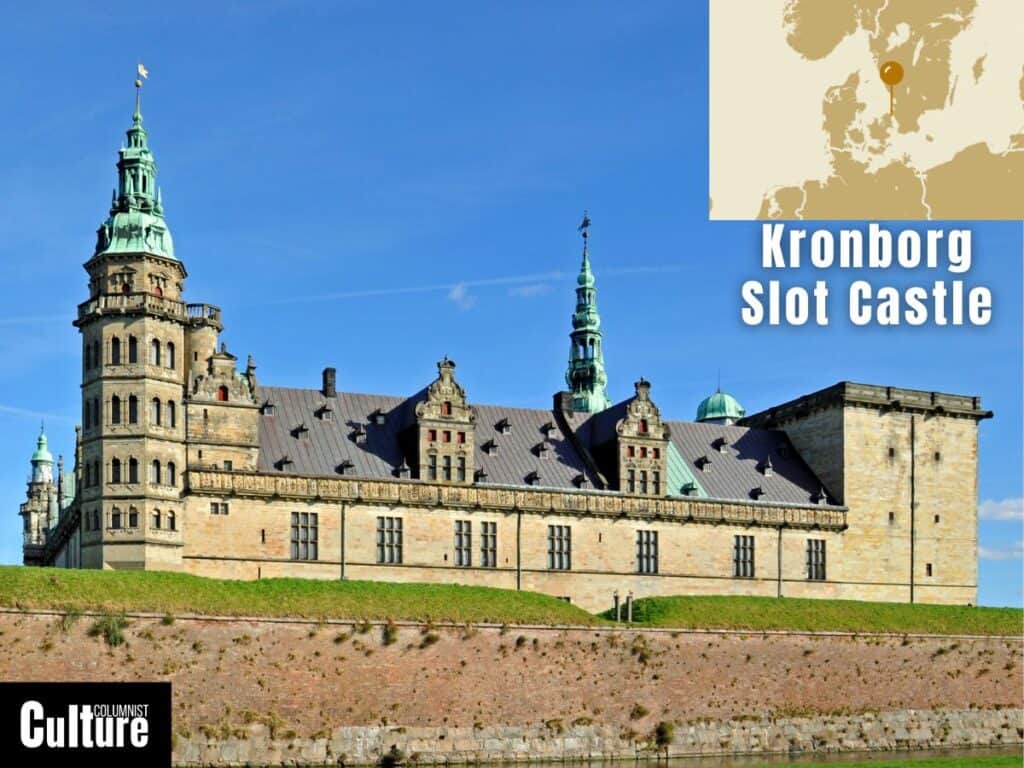
Kronborg Slot, commonly known as Kronborg Castle, is located in Helsingør, Denmark. Built in the 1420s, it’s best known as the setting for Shakespeare’s “Hamlet.” It has also been a significant military stronghold and was recognized as a UNESCO World Heritage Site in 2000.
The castle is a prime example of Renaissance architecture, featuring a star-shaped layout with bastions and canon batteries. The castle’s interior has grand ballrooms and an intricate chapel decorated with rich tapestries. In fact, Kronborg is known for its particularly large, 62-meter-long ballroom, one of the biggest of its kind in Europe.
Kronborg Slot is open to the public, and guided tours are available, including a special “Hamlet” tour. The castle offers excellent views of the Øresund Strait from its towers. Theatre, musical events, and kid-friendly exhibitions often take place there, including a Shakespeare Festival that usually takes place in August.
Leeds Castle, England
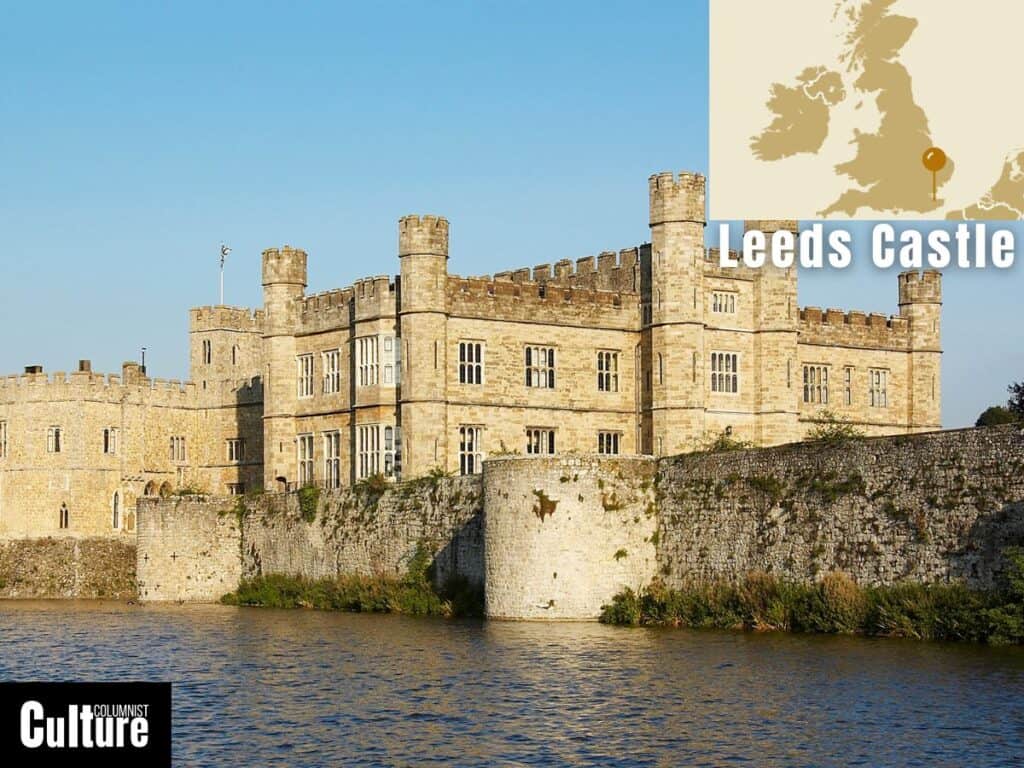
Leeds Castle is located in Kent, England, and has been described as the “loveliest castle in the world.” Originally built in 1119, it served as a royal residence for six of England’s medieval queens and was later used by Henry VIII.
The castle is a blend of medieval and Tudor architecture, surrounded by a picturesque moat. Inside, the castle features period furniture, tapestries, and a notable collection of medieval weapons and armor. The highlight of the castle is the Goriette, a medieval keep that houses a 75 foot long banquet hall.
The castle is open to the public year-round. Apart from the castle itself, the estate also features beautifully landscaped gardens, a maze, a grotto, a golf course, and even a falconry display. It also features a dog collar museum included in the admission ticket, where you can check out a collection of historic canine neckwear.
Stirling Castle, Scotland
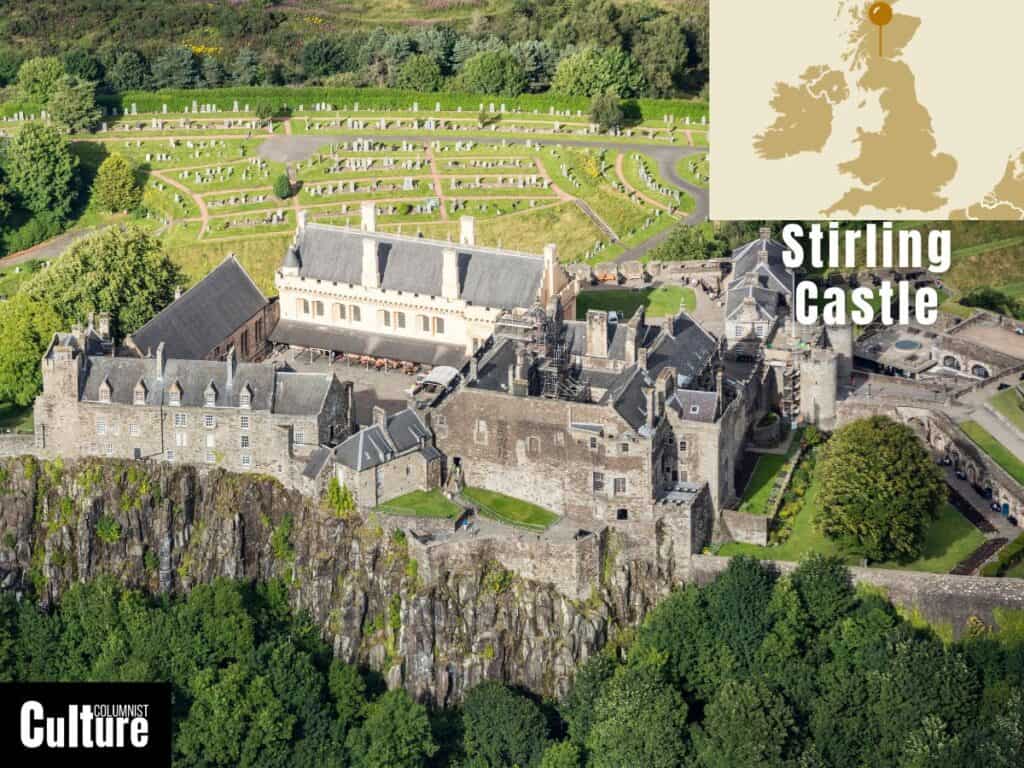
Stirling Castle is situated in Stirling, Scotland, and is one of the largest and most significant castles in the country. Built on top of Castle Hill, it was a key royal fortress and military stronghold. Several Scottish monarchs, including Mary, Queen of Scots, were crowned here.
The castle displays a mix of architectural styles but features mostly Renaissance influences in its design. Significant features include the Palace with its intricate stonework and the Great Hall, the largest medieval banqueting hall ever built in Scotland. The Stirling Tapestries, a set of hand-woven tapestries, are one of its interior highlights.
The castle is open to the public and offers guided tours. The best viewpoints are from the castle walls, which offer sweeping views of the surrounding landscape. Special events, including historic re-enactments and musical performances, are held throughout the year.
Spiš Castle, Slovakia
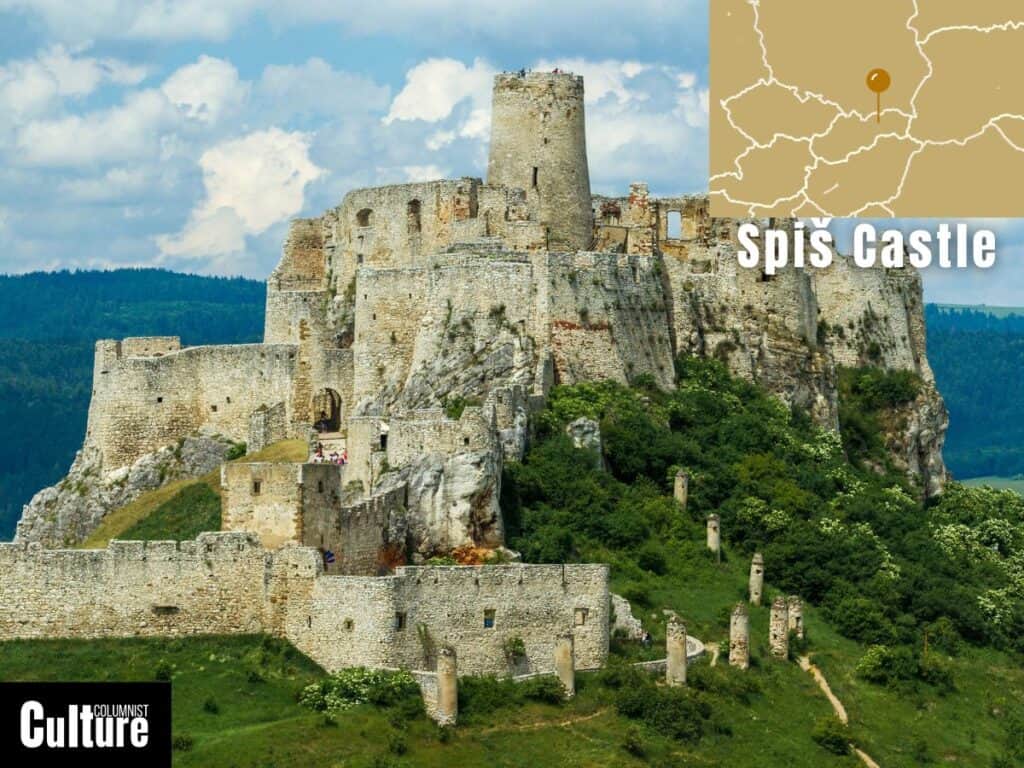
Spiš Castle, located in eastern Slovakia, is one of the largest castle sites in Central Europe. Built in the 12th century, it was originally a political, economic, and cultural center for the Kingdom of Hungary.
Built in Romanesque and Gothic styles, the castle is divided into upper and lower sections with a complex of residential and defensive buildings. Though partly in ruins, its towering walls, watchtowers, and chapel still stand. The castle offers a glimpse into medieval fortification techniques with its multiple layers of walls and moats.
Spiš Castle is open to the public, and guided tours are available. The surrounding landscape, including the nearby village and countryside, offers excellent scenery for photo opportunities. The site hosts medieval festivals and re-enactments, making summer an ideal time for a visit.
Heidelberg Palace, Germany
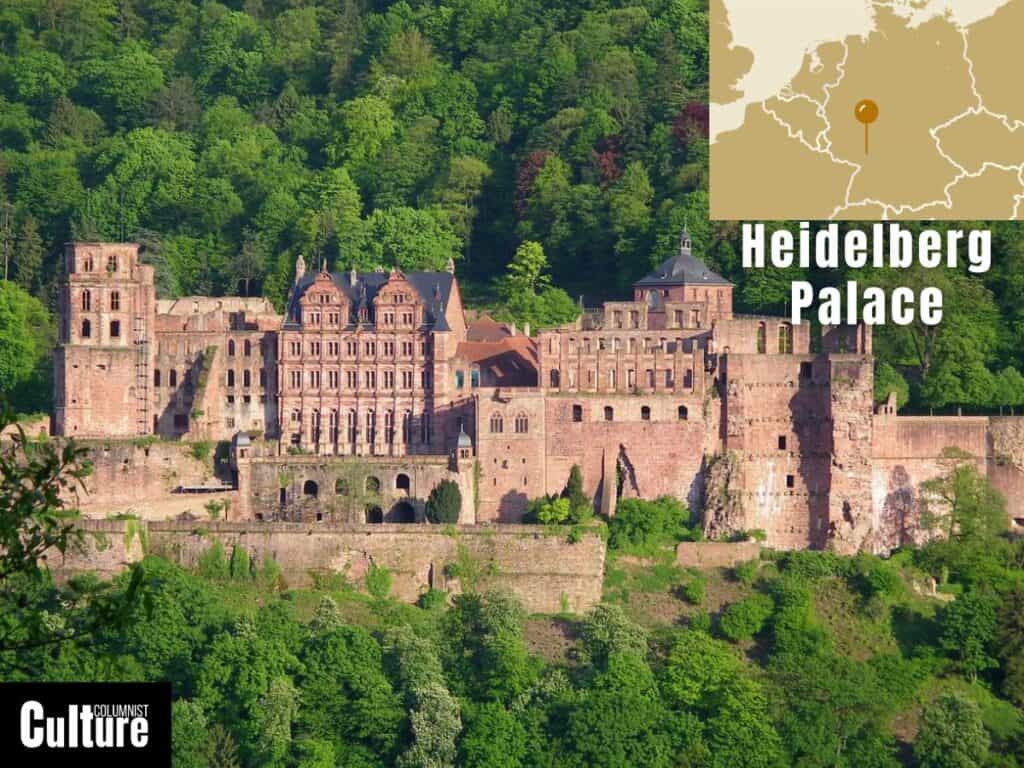
Heidelberg Palace, situated in Heidelberg, Germany, is a mix of styles from Gothic to Renaissance. Prince Elector Ruprecht III (1398–1410) erected the first building in the inner courtyard as a royal residence. The palace was damaged multiple times, from wars to fires and even lightning strikes, but was restored in the 1900s to its original look.
The castle is made from red Neckar sandstone. Its architectural highlights include the Ottheinrich Building, one of the most important German buildings of the Renaissance, and the English building, constructed in the style of the English Gothic Revival. Inside, it houses the German Pharmacy Museum.
The palace is partially in ruins but open to the public. Three times a year, in June, July, and September, the castle is illuminated in red at night with a fireworks display over the Neckar River. The light show often coincides with the Heidelberg Castle Festival, making it a particularly good time to visit.
Sforzesco Castle, Italy
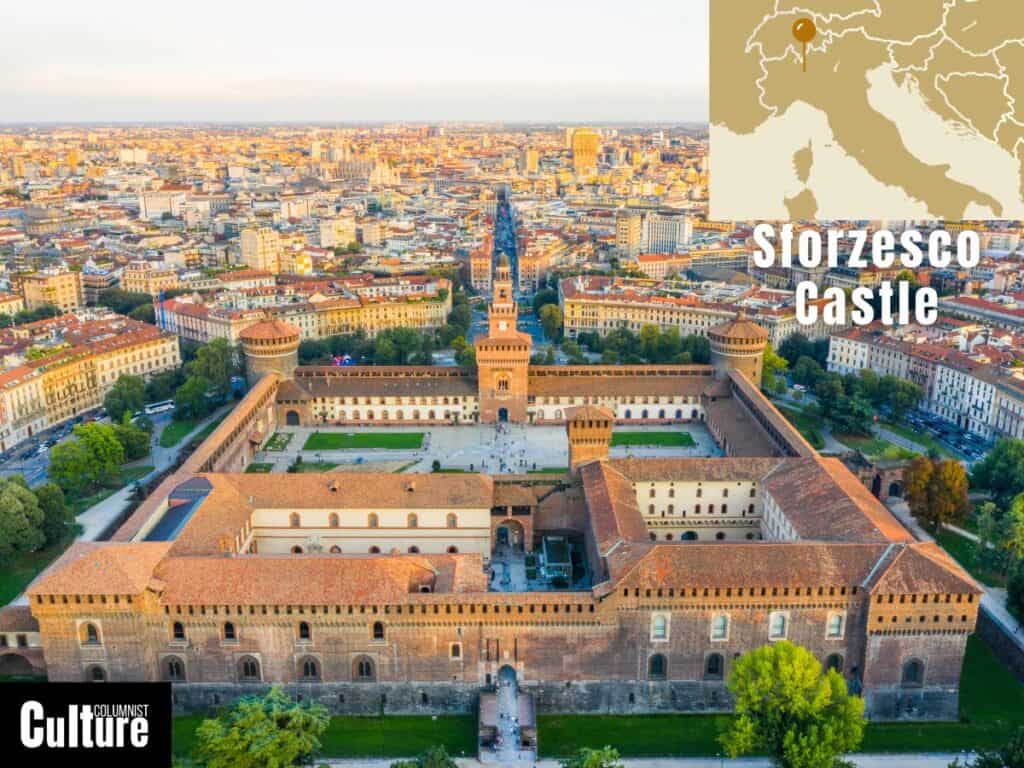
Located in Milan, Italy, Sforzesco Castle was built in the 15th century by Francesco Sforza, Duke of Milan. Over the centuries, it has served as a military fortress, residence, and center of cultural activity, housing artworks by masters like Leonardo da Vinci and Michelangelo.
The castle is built in a quadrangular pattern and features round bastions. Inside, it is home to several museums and art collections. The Torre del Filarete, the main tower, provides a panoramic view of the city. The castle is a magnificent example of Renaissance architecture.
The castle is open to the public, and visitors can either explore on their own or take a guided tour. The adjacent Parco Sempione is a great place for a leisurely walk after visiting the castle. Special exhibitions, music events, theater performances, and even comedy shows occur throughout the year.
Dunnottar Castle, Scotland
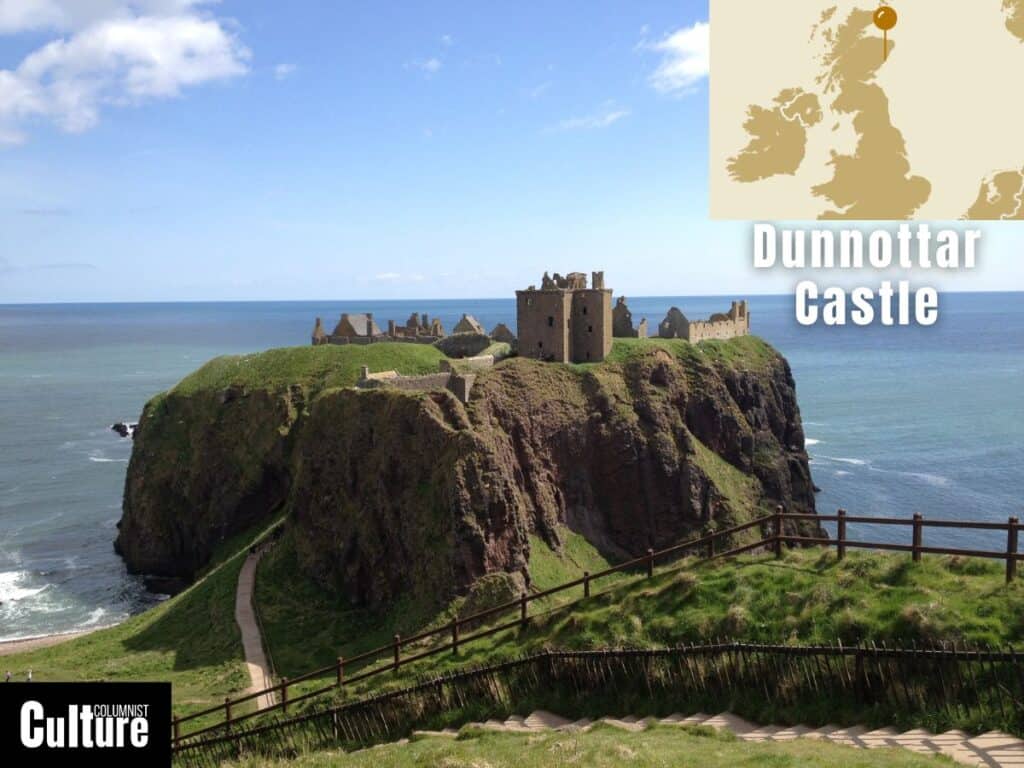
Dunnottar Castle is a ruined cliff-top fortress located on the northeastern coast of Scotland. Known for its strategic military importance, the castle played a significant role in the history of Scotland during the medieval and early modern periods.
The castle’s dramatic position, perched on a cliff overlooking the North Sea, is its most striking feature. Though largely in ruins, the buildings that do remain include a 14th-century tower house, a chapel, and various residential and service buildings. The architecture is medieval and is built primarily with local stone.
Accessible via a steep and narrow pathway, the castle is open to the public. There are no guided tours, but information boards provide historical context. The cliff-top offers spectacular views of the sea, making it a popular spot for photographers. Due to its exposed location, it’s best visited during good weather.
Orava Castle, Slovakia
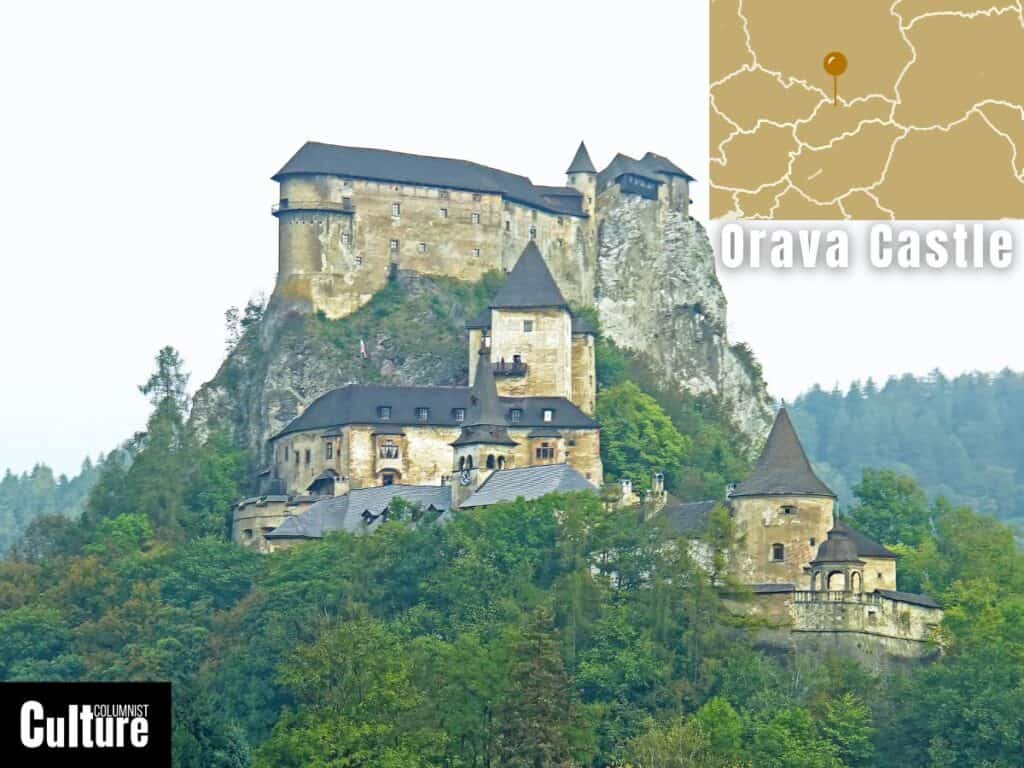
Perched on a rock above the Orava River, Orava Castle is one of the most beautiful and oldest castles in Slovakia. It dates back to the 13th century and was used as a fortress and noble residence. Over the years, it underwent several reconstructions, spanning Gothic, Renaissance, and Neo-Gothic styles.
Orava Castle is divided into three distinct sections: the Lower, Middle, and Upper Castles. The Middle Castle stands out with its Italian Renaissance courtyard. The fortress features several towers, chapels, and a dungeon. Wooden stairs connect various parts of the castle, adding a rustic feel.
The castle is open to the public, and guided tours are available in multiple languages. The view from the castle towers over the river and the surrounding landscape is simply stunning. The castle is especially popular around Halloween with horror film fans, as it was the film location for F. W. Murnau’s 1922 film Nosferatu.
Nesvizh Radziwiłł Castle, Belarus
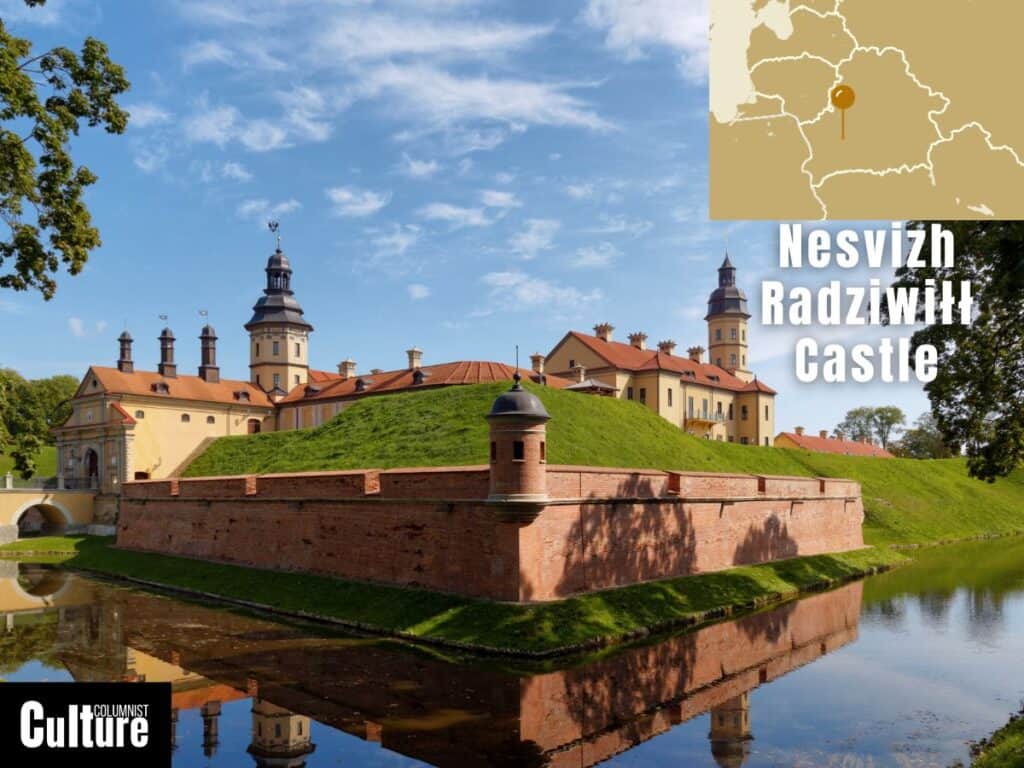
Located in Nesvizh, Belarus, the Radziwiłł Castle is a residential castle of the Radziwiłł family. It was built in the 16th century and combines Renaissance and Baroque architectural elements. The castle complex has been a UNESCO World Heritage Site since 2005.
The castle stands out for its square layout with corner towers and its late-Renaissance design. It features a chapel built in the Baroque style and a garden with Italian and French influences. Its interiors are a mixture of period styles, including Rococo and Neo-Gothic.
The castle is open to visitors year-round, with guided tours available. The castle grounds also include a beautiful landscaped garden ideal for walks. If you want to experience the castle in a unique way, you can book a night tour of the castle from October to March.
Château du Haut-Kœnigsbourg, France
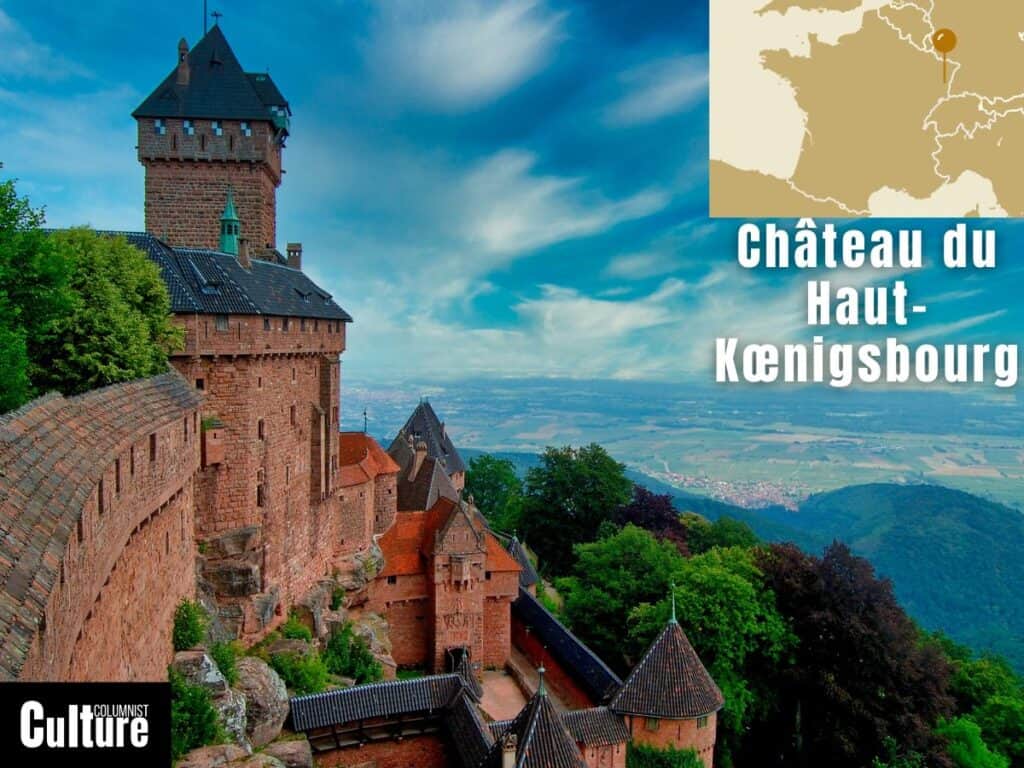
The Château du Haut-Kœnigsbourg is located in the Vosges mountain range in Alsace, France. Originally built in the 12th century, the castle was reconstructed in the early 20th century and is one of the most visited tourist sites in France.
Built in a medieval Romanesque style, the castle features a fortified wall, a drawbridge, and a keep with a watchtower. The interiors are furnished with period furniture, weapons, and artifacts, providing a window into the castle’s history. One of the highlights is the grand hall, with its impressive frescoes.
The castle is open to the public and can be explored independently or with a guided tour. The panoramic view from the castle offers a breathtaking vista of the Alsace Plain. Nearby attractions include the Alsace Wine Route, making it a popular destination year-round but particularly enjoyable in the autumn.
Château d’Angers, France
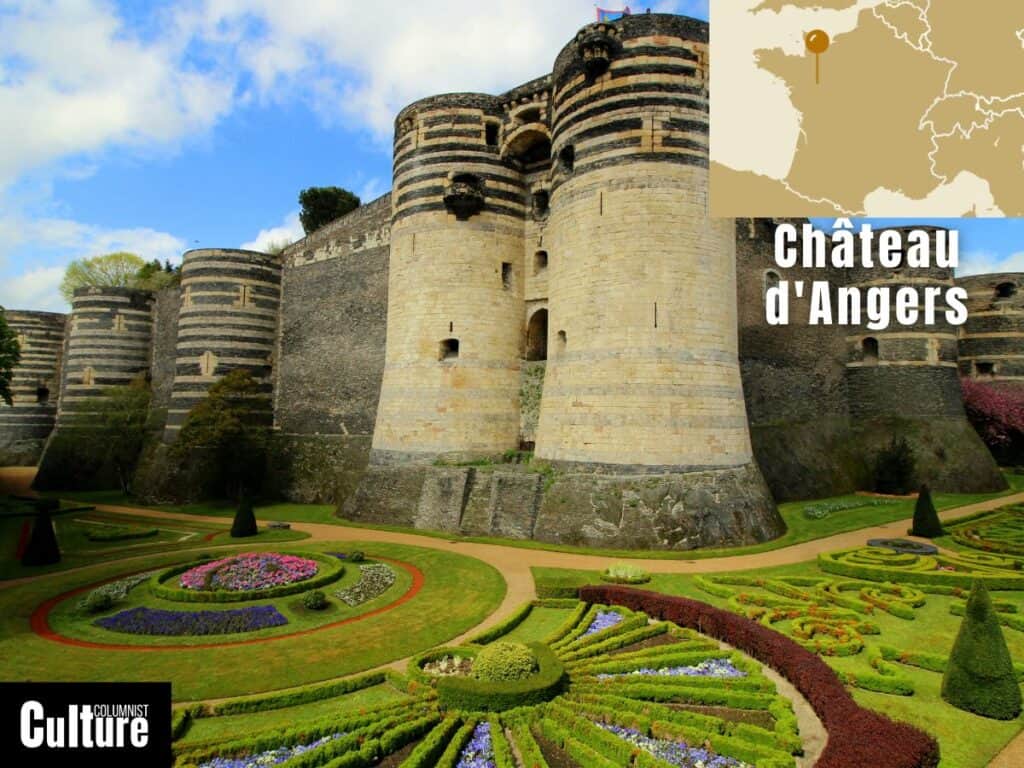
Château d’Angers is located in the city of Angers in western France. Built in the 9th century as a fortress, it later became a royal residence. The castle is notably home to the Apocalypse Tapestry, the longest tapestry in the world.
This medieval castle features 17 massive towers made of slate and limestone. It is built in the Plantagenêt architectural style, characterized by its robust and defensive elements. The walls span almost 660 meters, enclosing a 20,000-square-meter area that includes a chapel and residential quarters.
Open to the public, visitors can opt for guided tours or explore on their own. Apart from the Apocalypse Tapestry, the castle hosts various temporary exhibitions and offers panoramic views over the city from its towers. Visiting in spring allows you to enjoy the well-maintained gardens in full bloom.
Foix Castle, France
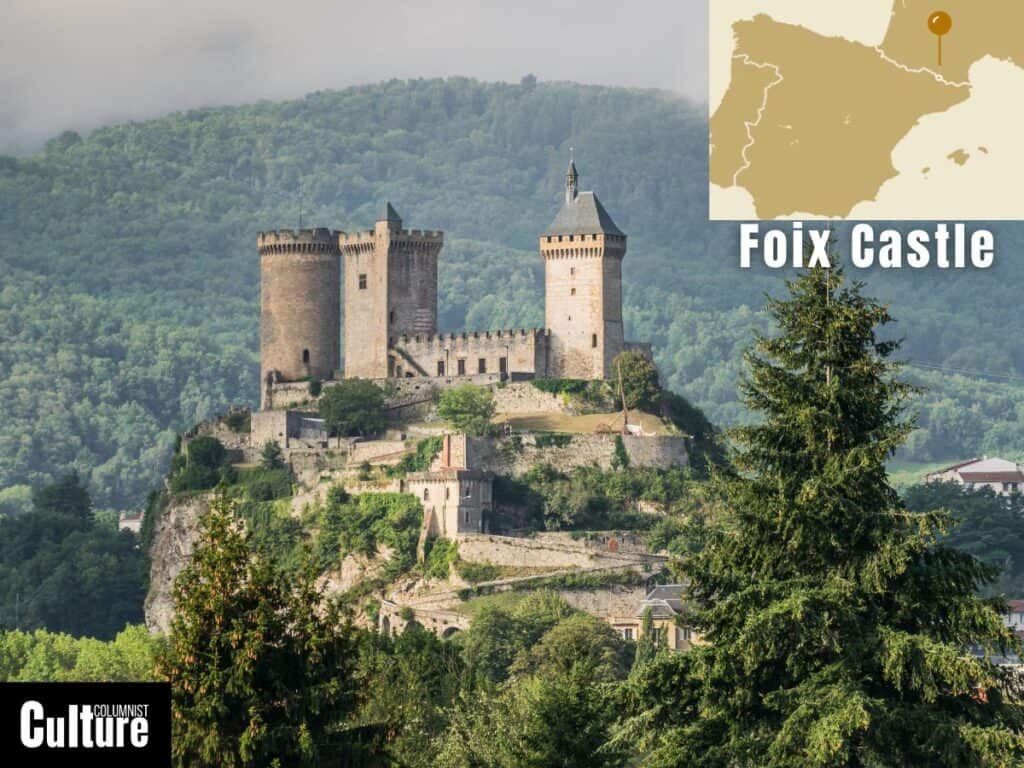
Perched on top of a rocky hill in the Occitanie region of France, Foix Castle dates back to the early medieval period. It was a stronghold for the Counts of Foix and played a key role in the Albigensian Crusade, marking its reputation as an impenetrable fortress.
The castle is known for its three distinct towers, each built during different periods, showcasing the evolution of military architecture. The architectural style is primarily medieval, with characteristic defensive elements like battlements and loopholes. Inside, historical exhibitions provide insight into the lives of past occupants.
The castle is open to the public, and guided tours are available. A climb to the top offers panoramic views of the surrounding Pyrenees mountains. The adjacent old town of Foix also offers dining and shopping opportunities, making it a perfect destination for a day trip.
Cardiff Castle, Wales
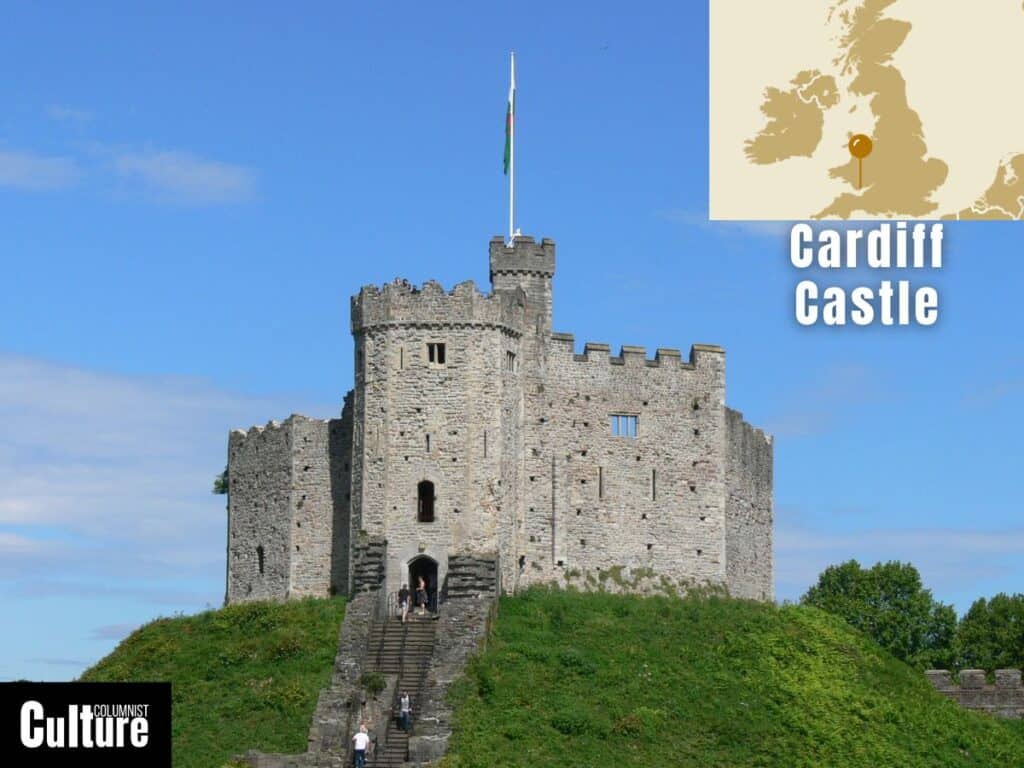
Located in the capital city of Wales, Cardiff Castle has Roman origins, with significant modifications during the Norman and Victorian eras. It has served various functions, including a Roman fort, a Norman stronghold, and a Victorian Gothic palace, giving it a unique blend of history.
The castle encompasses different architectural styles, from the Roman walls to the Norman keep and the Victorian mansion. The Victorian interiors, designed by William Burges, are incredibly ornate, featuring intricate woodwork, murals, and stained glass, making them one of the most lavish examples of 19th-century design.
The castle is open to the public, with the option of guided tours. The castle grounds often host concerts and events, particularly in the summer. The Castle Key, available to residents, offers free entry for three years, making it an enticing option for multiple visits.
Château Gaillard, France
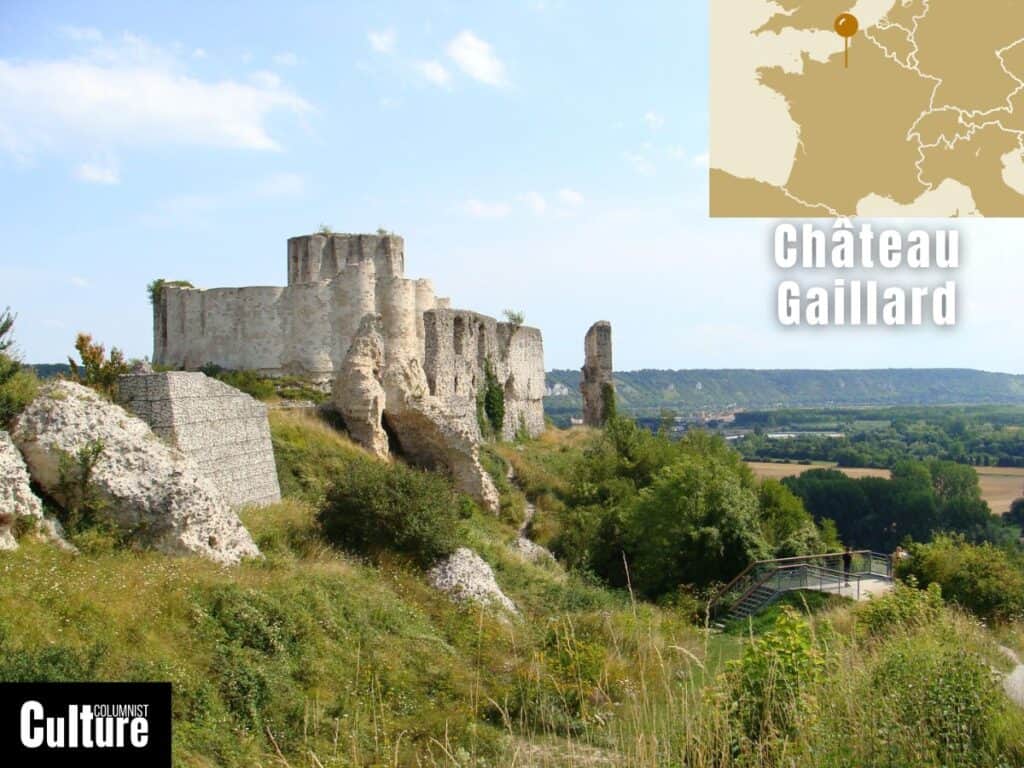
Located in Normandy, France, Château Gaillard was built in the late 12th century by Richard the Lionheart. Renowned for its advanced defensive features, it played a key role in the Anglo-French conflicts of the time, marking its importance in European history.
The castle is in ruins but is still a prime example of medieval military architecture, designed for utmost defense. Its concentric fortifications, dry moats, and fortified keep made it one of the most advanced castles of its time. Notable are its tall, circular keep and the intricate system of walls and ditches.
Château Gaillard is open to the public. Guided tours provide valuable insights into its historical and architectural significance. Although the castle is the main attraction, you can also take in views of the keep during a stroll along the banks of the Seine river in Les Andelys,a great source of inspiration for the French impressionist painter Claude Monet.
Harlech Castle, Wales
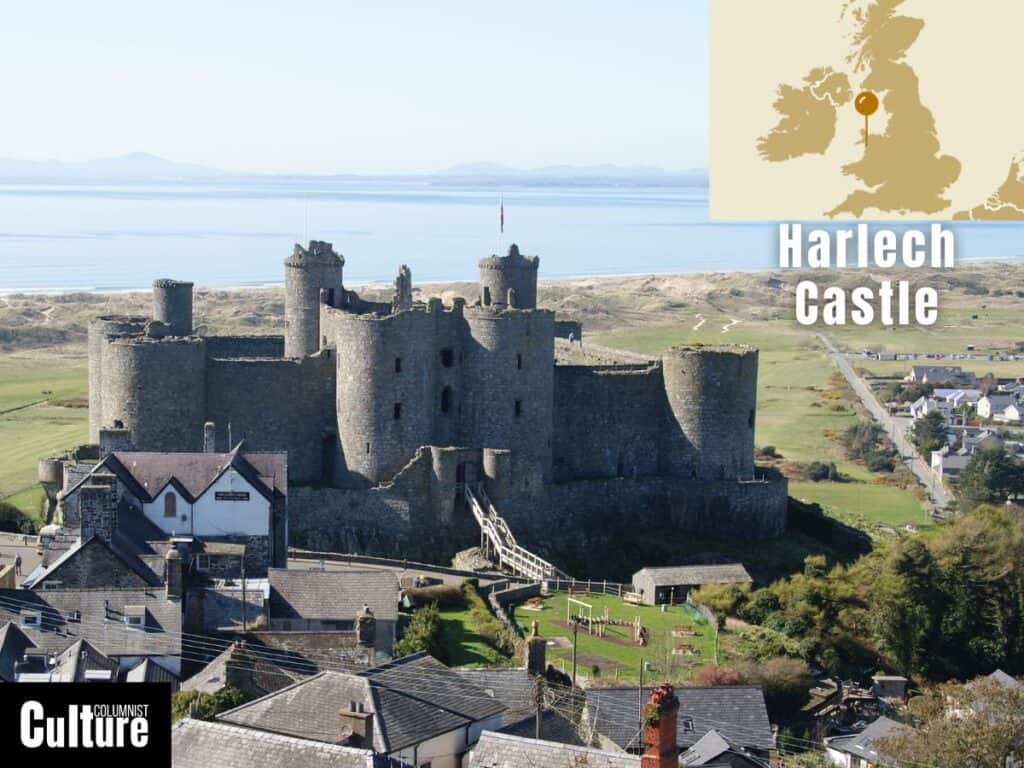
Harlech Castle stands on a cliff overlooking the Irish Sea in Gwynedd, Wales. Built in the 13th century by Edward I, it is one of the “iron ring” of fortresses constructed to subdue Wales, showcasing its historical significance.
Constructed with a concentric plan, the castle features formidable defensive walls. It also has a unique feature: a fortified way, or “way from the sea,”, a stairway of 108 steps rising steeply up the rock face intended to supply the castle during sieges. The inner buildings and towers offer panoramic views of the surrounding landscape.
The castle is open to the public and can be visited year-round. The views from its towers, especially during sunset, are a must-see. The castle is also lit up in the evening, providing a wonderful opportunity to snap some impressive shots of the fortress from the outside.
Coucy Castle, France
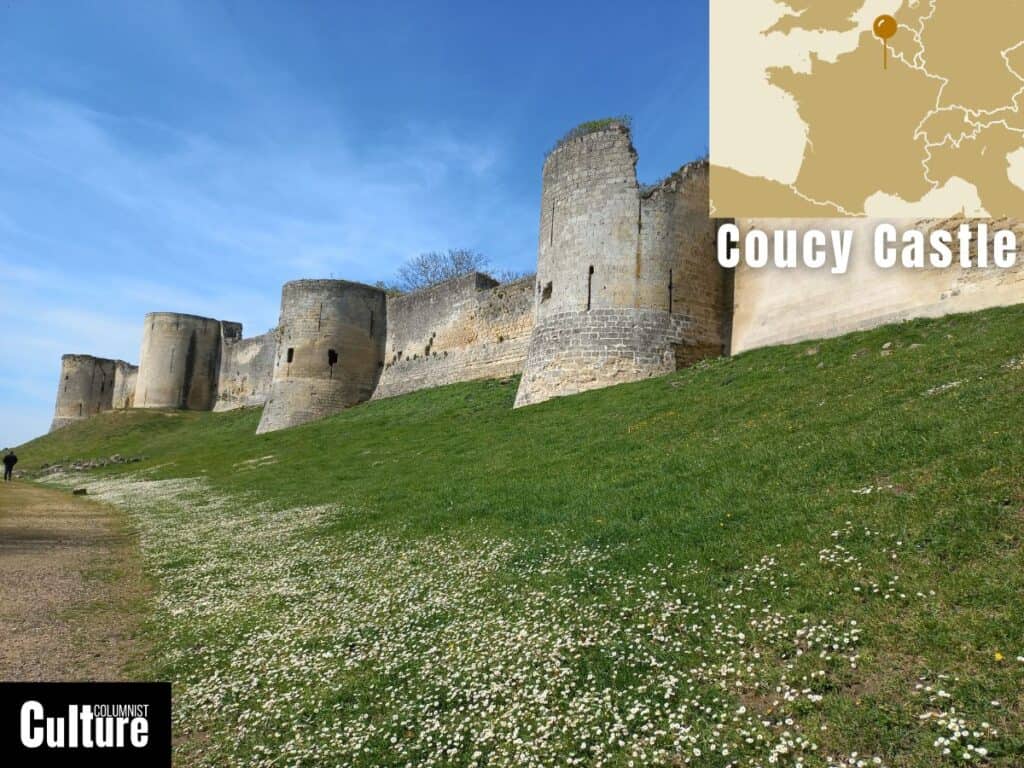
Located in Picardy, France, Coucy Castle was constructed in the 13th century and was once one of the most formidable fortresses in Europe. Although severely damaged during World War I, it remains an important symbol of medieval military architecture.
Originally, the castle had a cylindrical keep that was among the largest in Europe, surrounded by defensive walls and four corner towers. Today, despite the destruction, the remains offer glimpses of its past grandeur with the surviving walls and ruins.
While the castle is partially in ruins, it remains open to the public. Interpretive signs and some restored sections provide a sense of its original layout and design. The site is most atmospheric in the early morning or late afternoon, when fewer visitors are around.
Gisors Castle, France
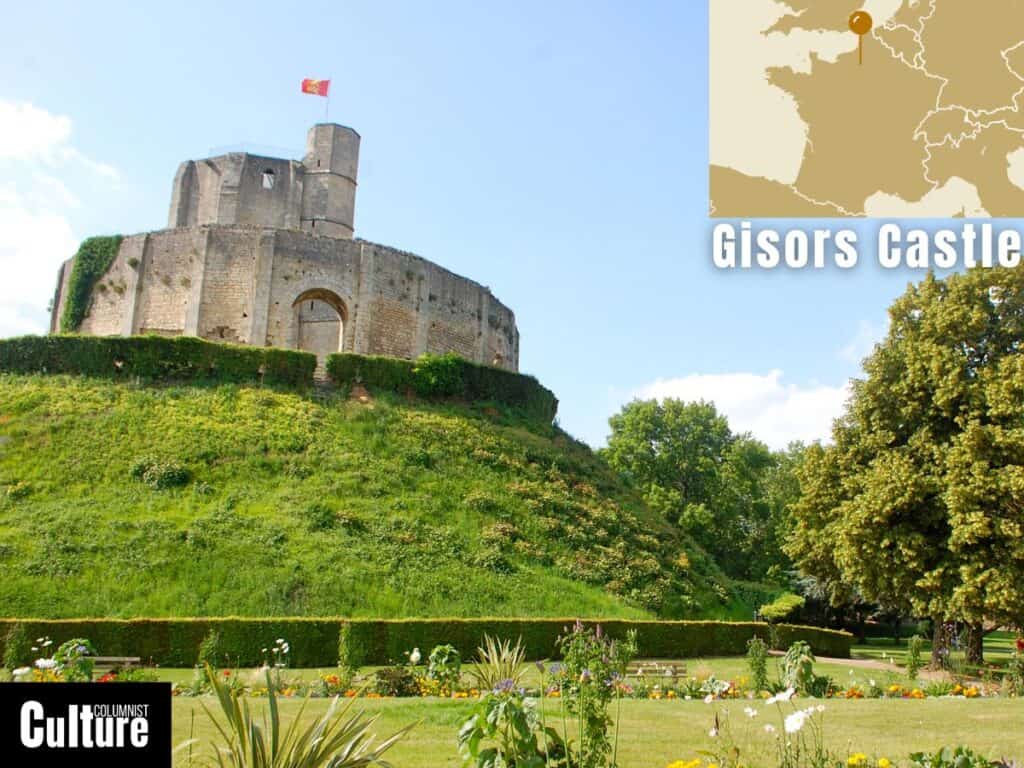
Gisors Castle is located in the town of Gisors in Normandy, France. Built in the 11th century, it was an important fortress marking the boundary between the Duchy of Normandy and the Kingdom of France, making it historically significant.
The castle features a strong keep and an outer bailey, typical of Norman military architecture. It’s built using limestone and has a polygonal shape, a feature designed for better defensive capabilities. Its ramparts and towers are particularly well-preserved.
The castle is open to the public, and guided tours are available that delve into its history and architecture. The castle grounds offer a pleasant space for picnics and scenic promenades. Visiting in the late spring or early summer allows for a better opportunity to enjoy the exterior grounds just as much as the inside of the castle.
Which country is called the land of castles?
Wales is often called the “land of castles”. With over 600 castles, Wales has the highest concentration of castles per square mile in the world. The Welsh landscape, with its rugged terrain and strategic locations near rivers and high ground, provided ideal sites for fortifications that could control key routes and territories.
Castles in Wales were built to secure the frontier and suppress Welsh resistance, leading to the huge numbers of these fortresses across the country today ranging from the fortresses like Caernarfon Castle to ruins like Raglan Castle that are available for visitors to come and explore.
But Wales is not alone as it sits right next to England, Scotland and Northern Ireland which are also home to many impressive fortresses like Edinburgh Castle, Dunluce Castle and Windsor. So if you love visiting castles, the whole of the United Kingdom, being one of the oldest countries in Europe, offers a huge number of medieval castles, ancient sites and monuments to see.
Which country has the best castles in Europe?
France has some of the best castles in Europe, with a number of its châteaux and palaces receiving UNESCO World Heritage status such as the Palace and Park of Versailles or the Loire Valley, known as the “Garden of France,” dotted with over 300 castles. French castles are opulently decorated with Renaissance and classical French architecture that makes them spectacular to visit.
Other countries in Europe that have impressive castles include the United Kingdom with the Tower of London and Edinburgh Castle; Germany with its castle-rich Rhine Valley and fairy-tale Neuschwanstein Castle; and the Czech Republic with its Český Krumlov Castle. These countries, much like France, have many castles and sites that are officially recognized for their outstanding value and cultural significance.

